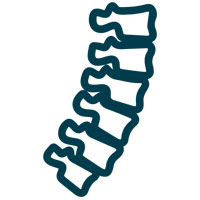Pain Relief in Horses: 3 Proven Methods to Manage Chronic Pain in Horses
Help your horse combat chronic pain & live their best life with these proven pain management strategies
Daily riding, training, and competition can often lead to chronic pain in horses.
Unfortunately, wear and tear takes an unavoidable toll over time.
As fellow horse lovers, we know your horse’s health and well-being is your top priority.
Knowing when they’re in pain and how best to manage it is key to maximizing their performance and quality of life.
That’s why, today, we’re covering three proven ways you can help with pain relief for your horses and ease your horse’s discomfort and help them live better.
But first, it’s crucial to learn the signs that your horse is experiencing pain so you can start treating the issue as soon as possible.
SIGNS OF PAIN IN HORSES: HOW TO TELL WHEN YOUR HORSE IS IN PAIN
You know your horse better than anyone, so you’ll likely notice any behavioral changes that could mean they’re in pain.
It’s also important to note that every horse’s pain tolerance is different, and this can change based on their age, history, and environment.
But in general, be on the lookout for these signs and symptoms:
- Elevated heart rate
- Elevated respiratory rate
- Unexpected sweating
- Dilated pupils
- Uncharacteristic behavioral changes (i.e., a typically calm horse becoming distressed)
- Noticeable changes in movement, lameness
- Signs of visceral pain (i.e., rolling, pacing, curling of the upper lip, kicking at their sides, refusing food, pawing)
PROVEN METHODS TO MANAGE YOUR HORSE’S CHRONIC PAIN
Before we get started, we want to stress that these strategies should be implemented under the guidance of your veterinarian.
It’s the best way to ensure your horse receives the care they need based on their unique situation.
Now, let’s get into it!

Much like it does for humans, massage therapy can help with relaxation and stress relief, blood flow, and even functional movement in horses.
A clinical review from the Equine Massage/Muscle Therapy and Saddlefit School in Camden found evidence that massages may enhance circulation by increasing arteriolar pressure and muscle temperature.
They also found that parasympathetic changes as a result of massage therapy — such as heart rate, blood pressure, and hormonal effects — can have a relaxing effect that helps reduce stress and anxiety.
A separate 2016 study tested the effects of a three-day per week massage therapy program on 72 Arabian racehorses throughout an entire race season…
And the results suggested that relaxing massages may have effectively helped the horses be more relaxed and calm and even perform better in their races.
As for functional movement, a study for the Equine Veterinary Journal examined the effects of massage on equine hindlimb mobility. Results showed significant improvements in passive and active limb protraction.
Although this non-invasive method is still under preliminary research, the results so far are very promising. Massage therapy can be a powerful tool to improve your horse’s health and quality of life.

According to the American Association of Equine Practitioners:
“Chiropractic can be very useful for alleviating pain in horses with chronic issues but will not reverse degenerative changes already present. This therapy’s benefits are greatest when used in conjunction with traditional veterinary care as a preventive approach to help keep a horse balanced and performing at his best.”
They also recommend chiropractic care if your horse has certain musculoskeletal issues that aren’t responding to traditional care, if it’s recovering from trauma or lameness, or for general maintenance and preventive care.

As a horse owner, you may already know that back pain is a common issue in working horses…
But the specifics may shock you.
Unfortunately, back pain is present in over 90% of the population of working horses. And given the nature of the issue, it can lead to several others, including:
- Behavioral issues
- Rider falls
- Suboptimal performance
- Pricey treatment expenses
- And even the end of a horse’s career
Treating back pain takes a complex and multi-faceted approach that can be a significant obstacle to your horse’s well-being.
But that’s where BEMER therapy comes in.
BEMER is a convenient, easy-to-use, and powerful way to not only help reduce your horse’s pain, but also to improve their postural control, spinal flexibility, functional movement, and more…
The BEMER Horse-Set comes with an adjustable blanket and two leg cuffs that send pulsed electromagnetic fields (PEMFs) through your horse’s body.
This signal non-invasively stimulates local circulation in the body’s smallest blood vessels, aiding in the transport of vital oxygen and nutrients.
The results are nothing short of incredible:
- Reduced muscular back pain
- Improved functional movement
- Improved microcirculation and vasomotion
- Relaxation and regeneration after exercise
- More support for parasympathetic processes in the body
- Increased physical performance and optimized suppleness
- Faster recovery after an injury
- Improved post-recovery and regeneration after surgery
And believe it or not, BEMER can provide these benefits in twice-daily sessions of just five, ten, or fifteen minutes.
When your horse is calm, limber, and feeling its best, it can live its best life.
Contact a BEMER distributor near you to learn more about how the BEMER Horse-Set can help you manage your horse’s pain and improve its performance.
The BEMER Horse-Set does not replace treatment and care of an injury or disease by a veterinarian. A veterinarian should be consulted prior to use of the BEMER Horse-Set for any medical condition.




